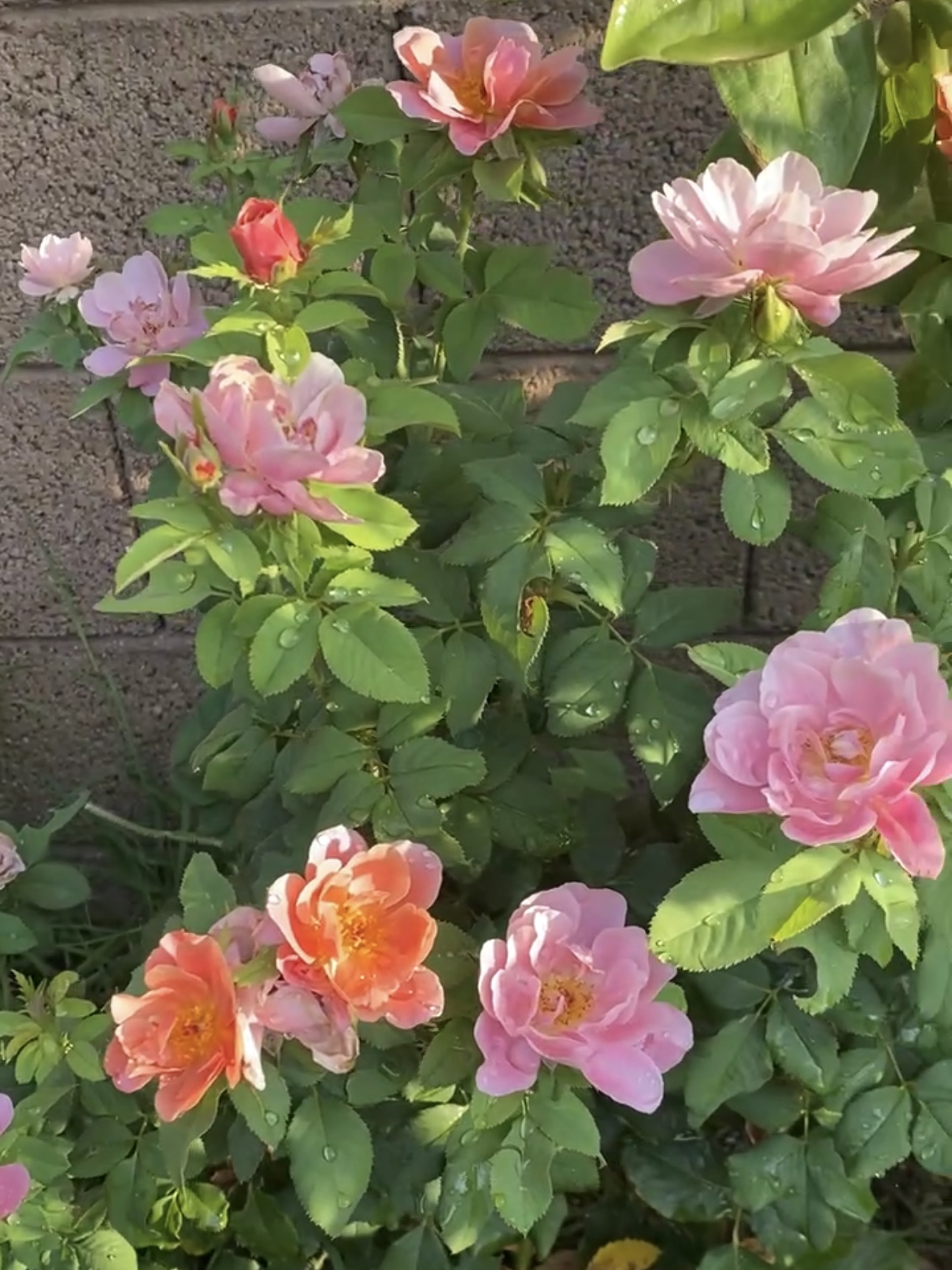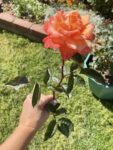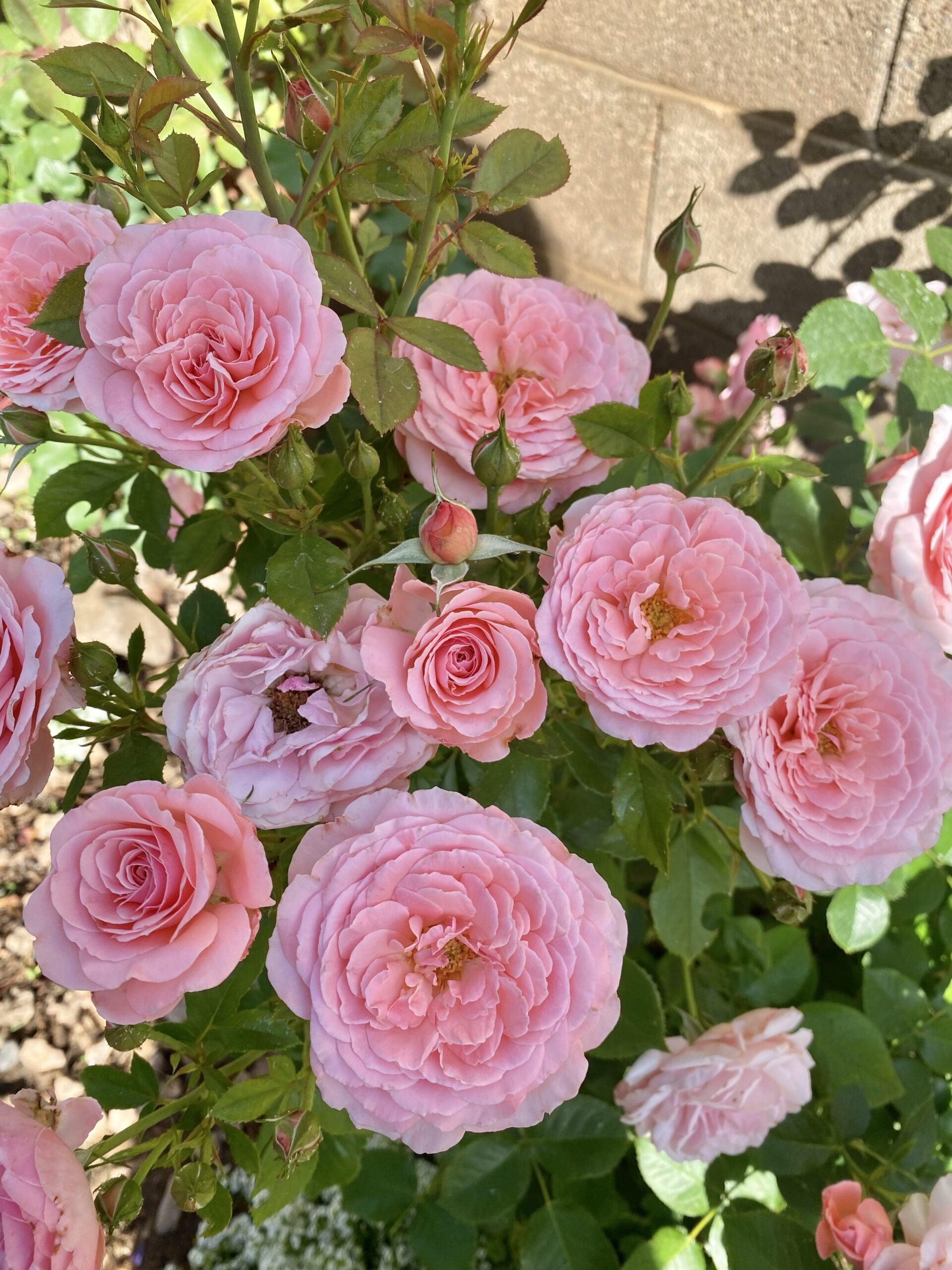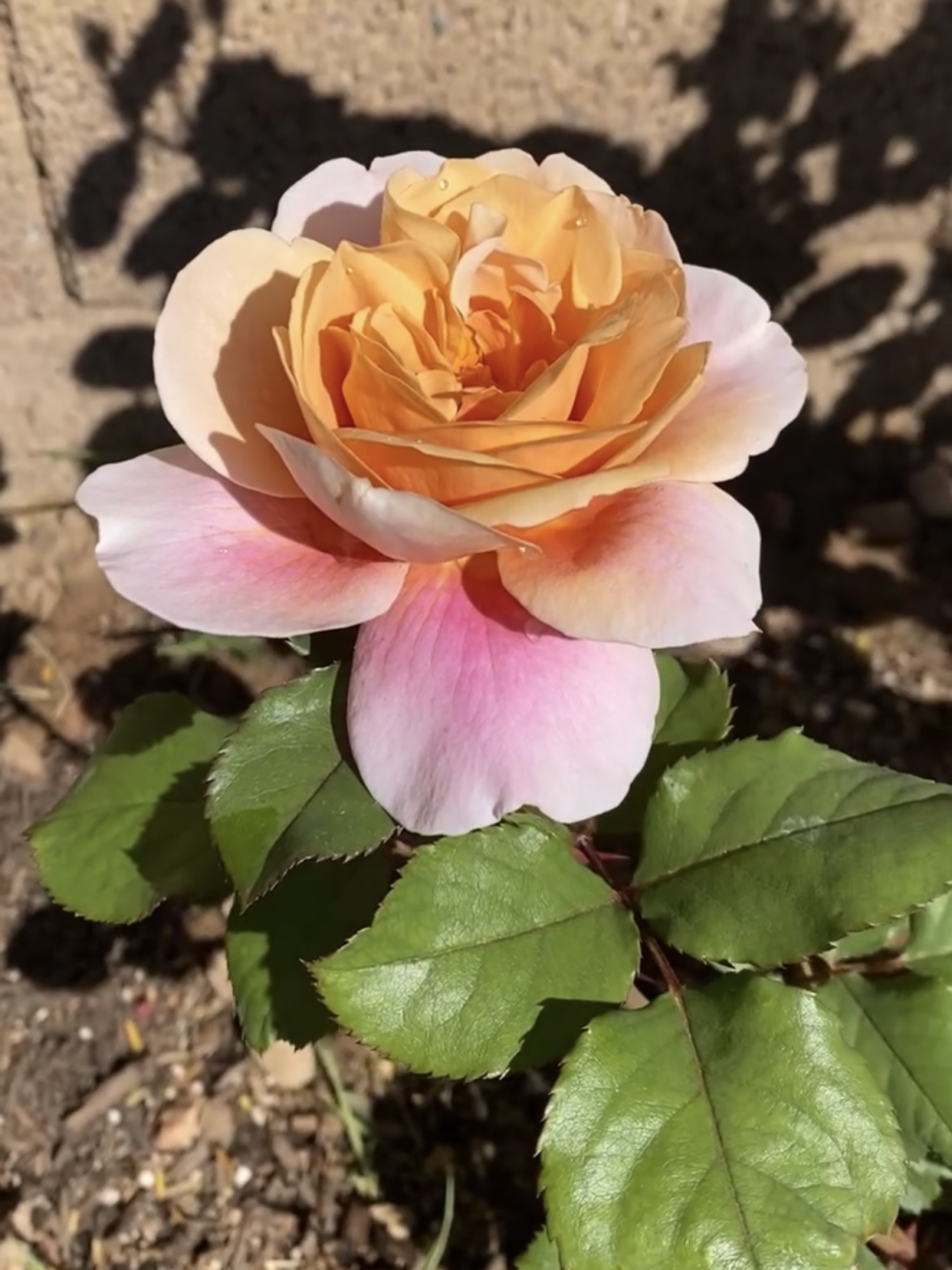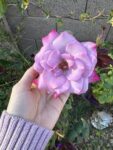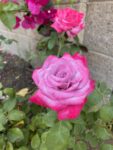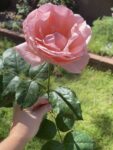Growing Healthy Roses – The best fertilizer recipe for gigantic blooms
One of the most common questions I get asked is, “How do you get such large rose blooms?!”
My short answer is always in how I feed my roses! However, I’ve learned a few other tips and tricks for growing healthy roses with giant, vibrant blooms.
My backyard rose garden (in Phoenix Arizona!) has over 20 different varieties of Roses. All of them have unique blooms and characteristics about them. Growing healthy roses requires consistency, patience and proper care in order to get the most out of each blooming season.
One thing all roses have in common: They love to eat. (same, girl… same)
Pin it for a friend:
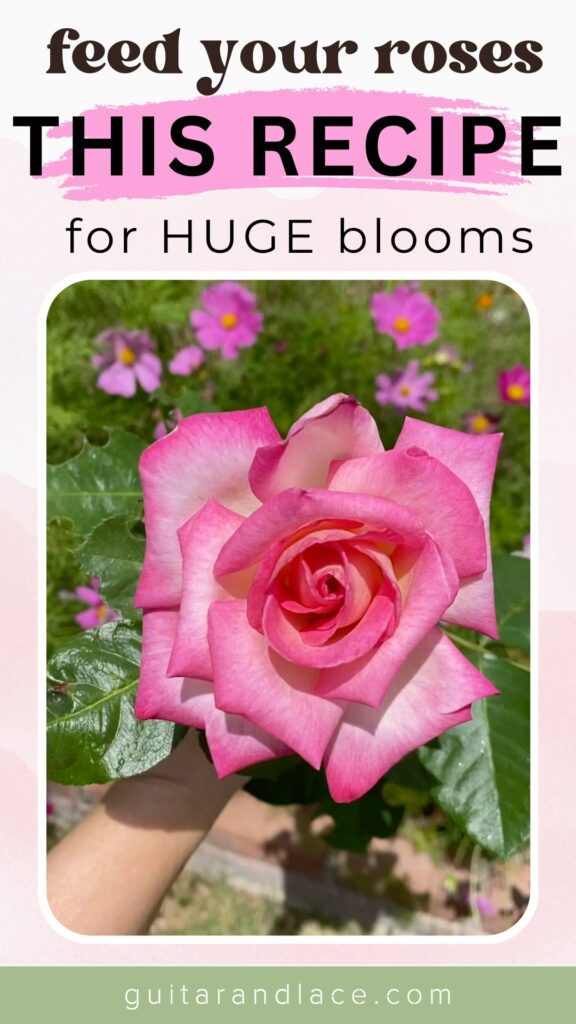
Growing Healthy Roses – The best fertilizer recipe for gigantic blooms
As you can see from the photos above, fertilizing your roses makes a world of difference in bloom shape, size and coloring.
The first image of my “Impressionist Climbing Rose” shows a well fed plant. This first bloom cycle of the season was during the peak of our springtime here in Phoenix, Az (about 2 1/2 months after that first feed in February).
These blooms were very full, luscious, vivid and the fragrance was off the charts!
The second image is the same rose plant a few months later. This particular bloom cycle was a few weeks after I had already stopped fertilizing in preparation for our brutal summer temps.
By mid July, the blooms were pretty much non-existent because of our heat.
So what do I feed my roses?! Happy to share…
My Exact Recipe for Feeding my Roses Early Spring
I have tried a few different fertilizers and combinations and this has by far given me the best results!
For every Established Rose plant (over a year old) I feed a blend of:
- 1/2 cup of Rose Food (my favorite brand) (I do closer to a full cup for my larger climbing roses)
- 2 Tablespoons of Sulfate of Potash-Magnesia (exact brand I use)
- 1 1/2 cups of Alfalfa Meal (exact brand I use)
I have also used Dr. Earth’s Rose Food (found it at Lowes & Amazon) and it worked well!
This recipe is basically a full feast for your roses served with an energy shot and multivitamin supplement.
Key nutrients when growing healthy roses:
The rose food I use has a high percentage of Phosphorous, which promotes healthy full blooms.
- Rose Food – Contains a proper blend of nitrogen, phosphorus, and potassium (NPK) designed for roses.
- Nitrogen – Promotes new “green” growth on roses. This means, sturdy stems and healthy green leaves.
- Phosphorus – Promotes healthy root system and prolific blooms.
- Potassium – Promotes overall health and resistance to harsh elements such as heat, cold and pests.
- Alfalfa Meal – contains a natural source of triacontanol, which is a growth stimulant for plants. Alfalfa also does wonders with improving the soil around your roses!
- Sulfate of Potash-Magnesia– an extra boost for root growth, heat & drought tolerance and brings out the vibrancy/color of blooms.
How and When to start feeding your roses:
The rule of thumb, is to feed your roses just as you start to see new growth during early spring. February is usually the best time for me in Phoenix, Arizona.
To feed, I lightly dig an inch or two below the drip line of each rose plant and evenly distribute the fertilizer mixture in.
I then cover with a few handfuls of fresh garden soil. I prefer this cheap, but still organic soil.
How often should you feed your roses:
After this singular feed in early spring, I typically will wait for the first flush of blooms. After the first bloom, I will continue to feed each rose plant once a month stopping in early June.
Late June through early September is the worst of the summer heat for Phoenix, Arizona. During these brutal parts of summer, I do not want to promote any growth on the roses. Stopping all fertilizers lets the roses know it’s time to rest!
In Phoenix, we kind of get a second spring once fall comes along. In mid-September, I will begin feeding this recipe again once a month, ending in November. The blooms are just as big as springtime with this recipe! However, I would say each rose plant has less blooms overall in the fall.

After stopping the rose food in November, I still get a few incredible blooms until about mid January. Then, the roses start to rest again for our “winter”.
Once February rolls around, the cycle begins! I will prune each established rose plant and feed!
Growing Healthy Roses less than a year old
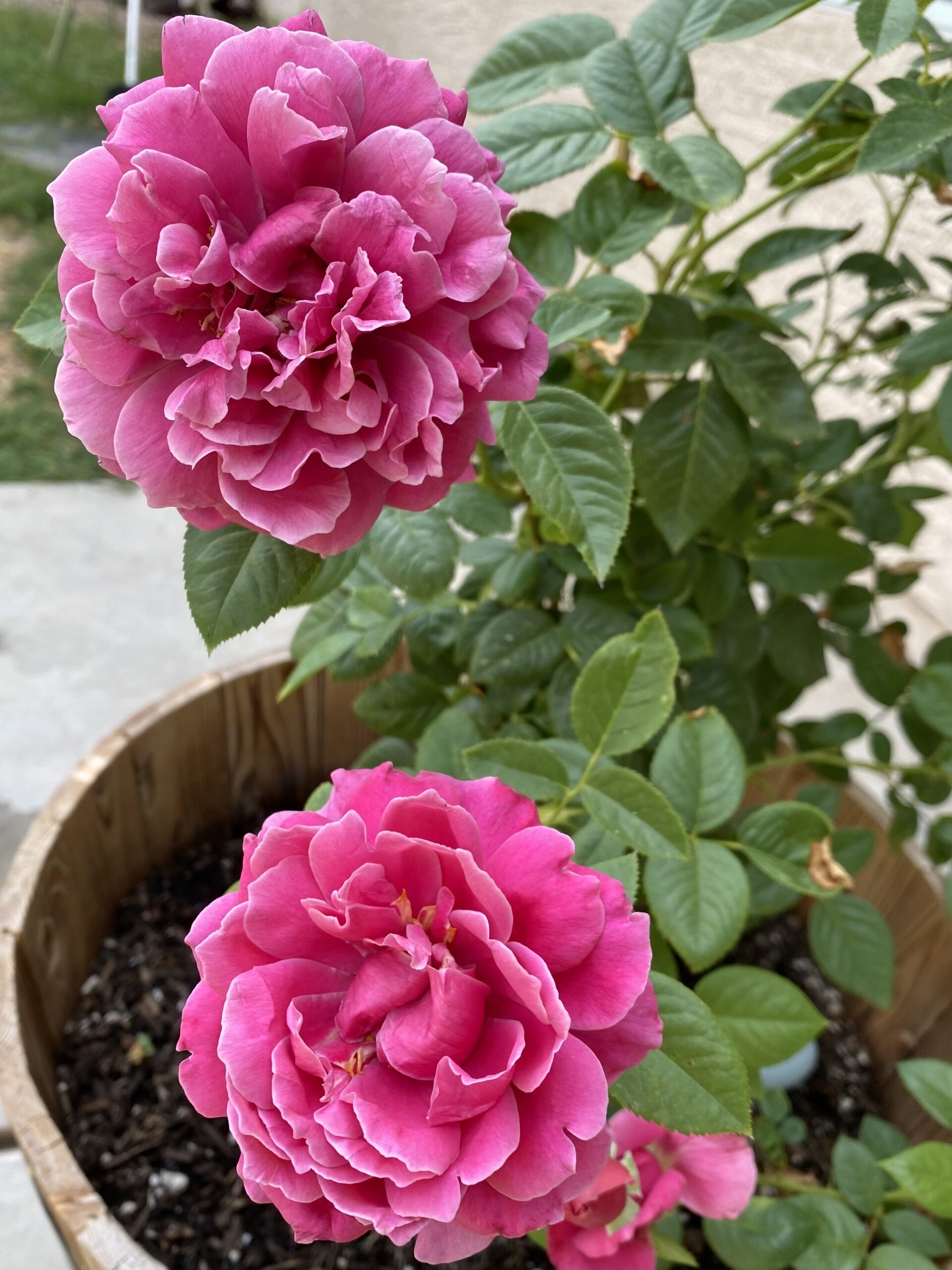
How I feed my baby Rose Plants
Most Rose Plants you purchase at your local nursery will be a few years old and can handle granular fertilizers (the recipe I shared above).
However, if you order young own-root roses from rose companies such as Heirloom Roses, you will be advised to not use granular fertilizers as to not risk burning the fragile roots.
For my newbie own-root roses, I use this Fish Fertilizer.
I mix about 1/2 a cup into my 2 gallon watering can and feed the baby roses once a month. Any excess left, I will just pour onto my other roses or flower beds.
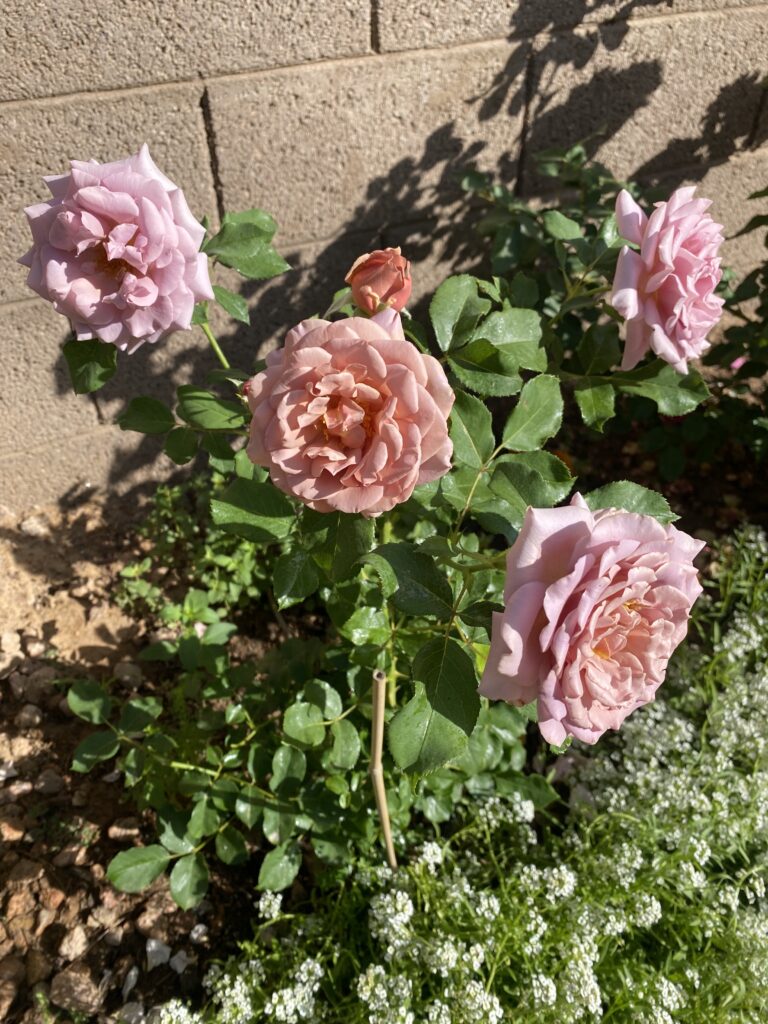
This works wonders for the young roses! I am always amazed at the giant blooms growing off of the tiny little baby stems.
The Fish Fertilizer is a little smelly, but honestly it’s not that bad. It smells like a fisherman’s lake for maybe an hour and then it slowly fades away.
Your baby roses, flowers, trees, shrubs, and veggies will LOVE you for it though!
I also need to note that whenever I do feed with Fish Fertilizer, I will lock the doggy door or my beagles will be digging for non-existent fish all night hehe
Other factors that may be hindering bloom size
If you have been feeding your roses consistently, but are still not seeing full blooms, there may be some other issues to consider.
As illustrated above, sometimes other conditions affect the size and appearance of your rose blooms.
During the late fall/winter months the sun tends to graze the most southern part of the sky (in the northern hemisphere). This part of my garden ends up being in the shade the entire morning and early afternoon which definitely hinders the bloom size.
Both blooms were properly fertilized, but unfortunately I cannot make up for the lack of full sun during the cooler months.
Growing Conditions that may also affect the size of your roses:
- Lack of sun – your garden area need 6-8 hours of sun for growing healthy roses. Morning sun prefered especially in hot climates
- Lack of water – most roses are drought tolerant, but they will not put out as many blooms in order to conserve energy
- Lack of deadheading – after a rose bloom has withered, you will need to cut it off to promote new blooms. Find the first set of 5 leaves below the bloom and cut about 1/4 inch above it at a 45 degree angle.
- Time – Feeding your roses will not give you overnight results. If you just started feeding during the season (after not feeding at all), you can expect results to slowly improve within the next few bloom cycles.
- Still too young – some rose plants will put the majority of their energy towards growing a strong root system resulting in tiny blooms or even no blooms at all. Once they’ve become more established, you should see happy, healthy blooms!
- Too hot – heat stresses roses out and leads to blooms opening prematurely which is why they appear smaller, with minimal petals and faded coloring
- Soil conditions – roses prefer a rich, loamy well draining soil. I amend my natural desert clay soil with organic garden soil and natural mulch to create a more loamy texture.
- Soil PH level – roses prefer their soil ph levels to be right between 6 and 7. I love this affordable meter to measure soils PH levels!
- Soil PH is too acidic, less than 6 – This will hinder your roses ability to absorb any nutrients. Amend with a garden limestone blend.
- Soil PH is too alkaline, more than 7 – This will hinder the amount of nutrients that your roses can take in. Amend with Garden Gypsum (also loosens clay soil and promotes greener foliage on all plants, trees and grass!)
- More pruning – every late winter/early spring you should be cutting down your established roses to promote healthy new growth
- Pests/diseases – you may have a dreaded pest or rose disease. Check for foliage spots, powdery mildew, aphids, or anything that looks suspicious.
Closing Thoughts on Growing Healthy Roses with full, vibrant blooms!
Roses are so rewarding to grow! I never thought I’d love them as much as I do, but here I am years later catering to over 20 rose plants. Nothing beats the first super bloom of spring where all the roses are in bloom.
I feel like I am in a mystical fairy garden!
On the other hand, roses can seem a bit high maintenance and frustrating at first. With the right feeding routine, growing conditions and patience you will see success!
You may also be interested in:

